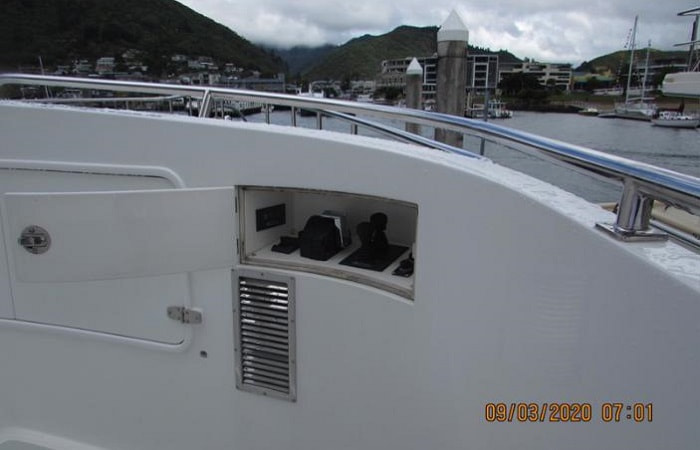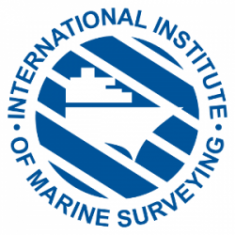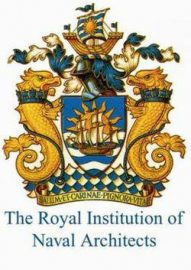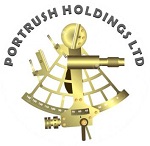Marine Surveys
Having a qualified marine surveyor inspect or survey a vessel is vital to a new purchase or for insurance.
With decades of experience dealing with international associations the requirements can be very daunting.
One way of looking at a survey for a client, is to view the survey as a very in-depth look at the vessel in the most intimate way.
Akin to an autopsy, the vessel is systematically inspected to give the potential owner knowledge that will assist his purchase knowing any faults that are found.
Moisture testing is vital to understand leaks and ingress to a vessel as the damage can be devastating.
Ultrasonic thickness testing where metals show wastage can give excellent indications of how thick the hull substrate really is.
Having been in the refitting and initial build sequence to vessels, our knowledge of how a vessel is built, put together in different modems is vital when inspecting.
We survey all types and construction methods such as steel, aluminum, Glass, and wood.
One area that is becoming more evident, that sellers are now requesting surveys prior to marketing their vessels.
The reason is to understand and know what they are having to face given an in-depth survey from a buyer.
This is a sensible and pro-active method before marketing the craft.
Pre-Purchase Surveys
Insurance Surveys
Services include ultrasonic thickness testing and moisture testing. After surveying the vessels overseas we can also provide delivery to New Zealand or to the new country where the vessels are going.
Crewing & Delivery:
- Certified Masters and Engineers
- International Deliveries
- Domestic Deliveries

47 years of experience
Internationally Recognised Surveyor International Institute of Marine Surveyor Internationally Recognized Surveyor Member of the International Institute of Marine Surveyors Diploma of Marine Surveyors Fellow of the Royal Institute of Naval Architects
Knowing your type of vessel
The four main types of vessel are Steel, Aluminum, Glass and Timber. All have different methods of construction and all have differences in failure. It is vitally important to ensure that the surveyor understands each type of construction and potential pit-falls. The minimal cost of hiring the expertise of a skilled marine surveyor is often negated due to isolating and defining inherent issues with the vessel.
We have a wealth of experience in repairing, refitting, building and driving all different types of craft. It is this experience and knowledge which we use to define deficiencies and guide the client to the best repair method. We use modern equipment to test for moisture as well as an ultrasonic tapping method which assists in defining rot or delamination.
How a survey is conducted
Here is the example of a pre-purchase survey by Portrush Holdings: the insurance and safety inspection of a Nordhavn 55 yacht carried out in March 2020, in Auckland.
METHOD OF INSPECTION
First the vessel will be visually inspected, over the area to be checked in detail, then will be inspected by audio-acoustic tapping technique. The audio taps will be between 100 and 150mm spacings at maximum.
Top decks, freeboard will be checked by moisture meter at random points, focusing on skin fittings.

Here is the example of a pre-purchase survey by Portrush Holdings: the insurance and safety inspection of a Nordhavn 55 yacht carried out in March 2020, in Auckland.
METHOD OF INSPECTION
First the vessel will be visually inspected, over the area to be checked in detail, then will be inspected by audio-acoustic tapping technique. The audio taps will be between 100 and 150mm spacings at maximum.
Top decks, freeboard will be checked by moisture meter at random points, focusing on skin fittings.

Direction will take from the stern port, quarterdeck, sides and bow area, lockers, cowls and associated structure. Then the flybridge, down, using the same anti-clockwise rotation.
Inner areas will be worked from the transom, tiller flat area, forward to the bow.
Out of water will again start from the port transom across under from waterline/boot topping down to the keelson in strip tapping.
Engineering items such as thrusters, blades, whiplash and jointing of stabilizer fins, intakes, transducers, shaft, bearings, blades, rudder and pintal/shoe if is fitted. Anodes, or cathodic reaction will also be observed.
Any blisters found will be checked, emptied and the ph value established.
Some areas of the vessel may not be able to be inspected owing to Health and Safety concerns, such as freeboard outer areas or topside cowls and flybridge top.
SCOPE AND LIMITATIONS
OF THIS INSURANCE & SAFETY PRE-PURCHASE SURVEY
1. This type of survey is a general visual structural & safety inspection of the vessel and it’s fitted equipment and systems and no representation is made as to how long any equipment will continue to function. Because the inspection method is non invasive and non destructive and includes only reasonably accessible areas, latent or concealed defects (if any) are not included in this inspection.
2. The survey will not involve removing or moving objects, furniture, equipment, stored goods or coverings of any type. Hatches and ports are not water tested for leaks and therefore are excluded from the inspection
3. This is not a structural or mechanical engineering analysis and although a superficial inspection of machinery is included, referral to specialist should be undertaken or may be referred. Wood decay and hull blistering is often more extensive than a limited non-destructive inspection indicates. When wood/Glass/Aluminium/Steel or hull defects are identified in a report the client is advised to seek independent technical advice which may involve destructive analysis, and obtain repair estimates prior to purchasing the vessel.
4. Only licensed persons are authorized to inspect LPG or 240v/110v electrical installations and equipment. Such areas are not included in this inspection. General observations may be included.
5. A chemical analysis of any reinforced plastic laminate to determine its composition or integrity is not included in this inspection.
6. Portrush Holdings Ltd will observe the owner or his representative demonstrating, machinery, safety gear and ancillary equipment including radios, navigation instruments, electrical and electronic equipment, and a limited inspection of sails (where fitted) only during the course of a Sea Trial.
We are affiliated to


